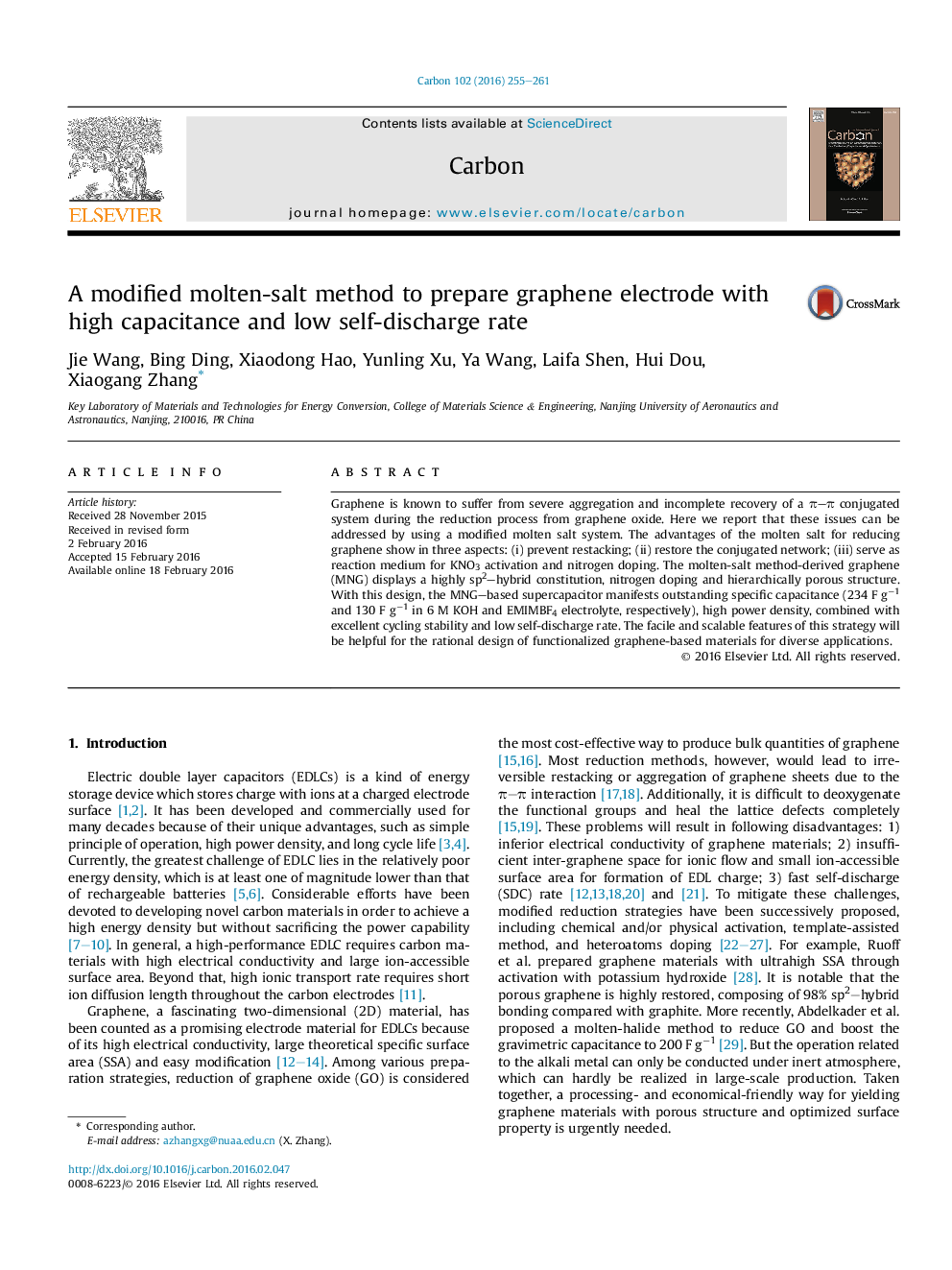| Article ID | Journal | Published Year | Pages | File Type |
|---|---|---|---|---|
| 7849865 | Carbon | 2016 | 7 Pages |
Abstract
Graphene is known to suffer from severe aggregation and incomplete recovery of a Ï-Ï conjugated system during the reduction process from graphene oxide. Here we report that these issues can be addressed by using a modified molten salt system. The advantages of the molten salt for reducing graphene show in three aspects: (i) prevent restacking; (ii) restore the conjugated network; (iii) serve as reaction medium for KNO3 activation and nitrogen doping. The molten-salt method-derived graphene (MNG) displays a highly sp2-hybrid constitution, nitrogen doping and hierarchically porous structure. With this design, the MNG-based supercapacitor manifests outstanding specific capacitance (234Â FÂ gâ1 and 130Â FÂ gâ1 in 6Â M KOH and EMIMBF4 electrolyte, respectively), high power density, combined with excellent cycling stability and low self-discharge rate. The facile and scalable features of this strategy will be helpful for the rational design of functionalized graphene-based materials for diverse applications.
Related Topics
Physical Sciences and Engineering
Energy
Energy (General)
Authors
Jie Wang, Bing Ding, Xiaodong Hao, Yunling Xu, Ya Wang, Laifa Shen, Hui Dou, Xiaogang Zhang,
